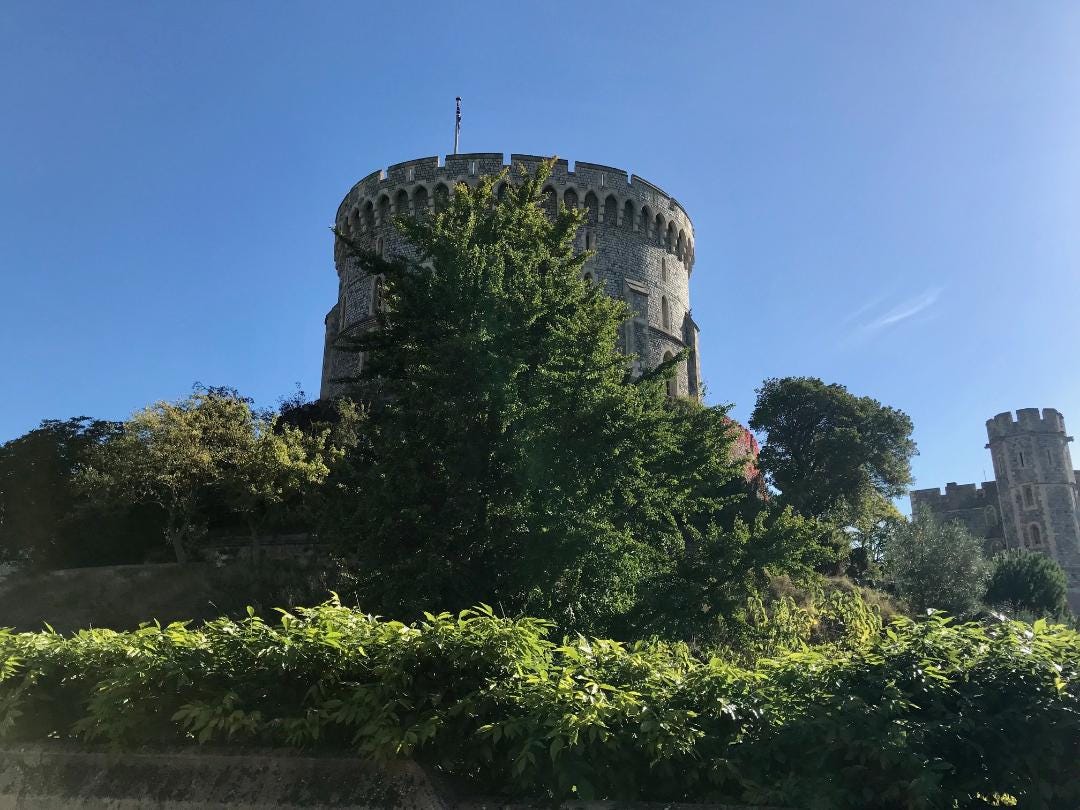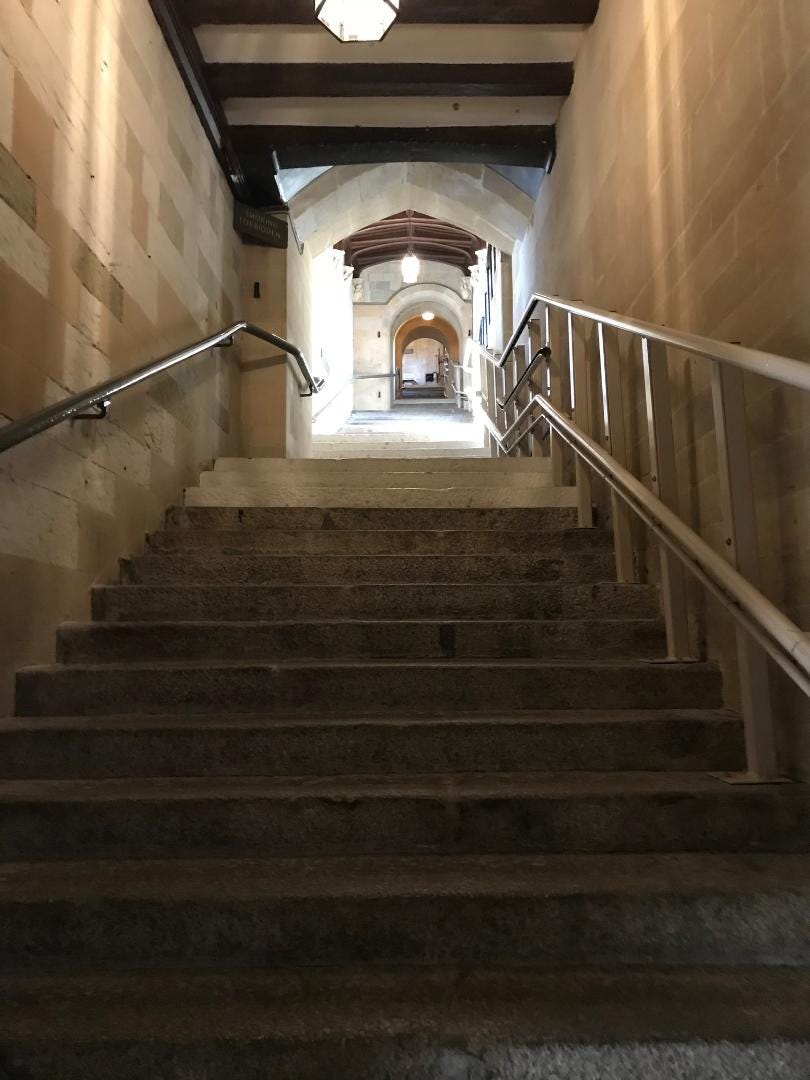A week ago, I offered my Royals Extra readers an exclusive six-part series about the secret life of Sir Alan “Tommy” Lascelles, the influential adviser to the British royal family for more than three decades of the 20th century. He was made famous in recent years by The Crown, in which he was vividly played by actor Pip Torrens. Tommy Lascelles had a powerful position as a private secretary to four monarchs—George V, Edward VIII, George VI, and Queen Elizabeth II, but his most significant role was shaping the legacies of two monarchs and a queen consort through their authorized biographies. Since 1943 he had served as Keeper of the Royal Archives at Windsor Castle, a crucial source of power and influence.
My series revealed for the first time that Lascelles was a closeted bisexual who had a passionate affair with the official biographer of Queen Mary—the wife of King George V and mother of King George VI—and had been intimate during Oxford University days with his chosen official biographer of George V, Sir Harold Nicolson. I shared many startling new details about Tommy and James, and the role Nicolson played in trying to manage Lascelles’ infatuation at age seventy with a man thirty years his junior.
In case you missed the series and are interested in reading it, here are the links: Part I: Setting the Stage, Part II: The Making of a Courtier, Part III: The Hidden Hand, Part IV: The Secret Romance, Part V: Triumph and Wounded Feelings, and Part VI: Tragic Libertine and Boho Hermit.
Both Nicolson and Pope-Hennessy, as well as Sir John Wheeler-Bennett, the official biographer of King George VI, had unrestricted access to the Royal Archives, which have been housed in the Round Tower at Windsor Castle since 1914. Tommy Lascelles oversaw their use of the royal family’s private papers, and he made significant accommodations to help them in their work.
Their experience in the mid-20th century is worth comparing with what it’s like today inside the iconic Round Tower. I was fortunate to spend three months in the Royal Archives researching my recent biography of the late Queen Elizabeth II’s mother and father, titled George VI and Elizabeth: The Marriage That Saved the Monarchy. In some ways the experience is similar, but in others, vastly different.
One constant then and now is the daunting challenge on arrival: a climb up a staircase of more than one hundred medieval stone steps—the equivalent of ten stories. Harold Nicolson made his first ascent in January 1949, and was greeted at the top by Mary Mackenzie, Registrar of the King’s Archives, described by the biographer as “formidable.” Not just anyone could saunter into the Round Tower. Windsor Castle is a well-guarded fortress. But Nicolson was an anointed author, and his friend Tommy Lascelles had smoothed his path so he could easily come and go. These days a security check is required, along with an “escorted visitor pass” for entry.
I was not an official biographer, but I was an “approved” biographer, a distinction neatly explained by John Wheeler-Bennett. The approved biographer “of his own volition, conceives a desire to write the life of some sovereign,” Wheeler-Bennett wrote in his autobiography, “and, if his status be confirmed as that of an established and genuinely bone fide scholar and the Sovereign’s permission has been granted, he will receive invaluable, generous, and courteous assistance from the staff of the Royal Archives…who will accord him free access to their treasures.”
In the mid-1970s, when Wheeler-Bennett made that observation, books written by approved biographers were “subject to submission to the Sovereign through the Keeper of the Royal Archives or his deputy, the Royal Librarian.” That royal sign-off continued for several decades, but now the only requirement is for a senior archivist to thoroughly check the author’s source notes for accuracy. This is typically done with efficiency and speed.
Nicolson, Wheeler-Bennett, and Pope-Hennessy, whose books were published in 1952, 1958, and 1959, each used the royal family’s archives in his own way. Nicolson had a special room in the Round Tower, with a view of the castle’s other towers, the bend in the River Thames below, and the hills beyond Marlow and Henley. He was often accompanied by his secretary, who typed the notes he wrote in longhand. Tommy Lascelles also provided him a designated room in St. James’s Palace in London—convenient to the clubs where Nicolson liked to dine—to read the diaries of George V.
In the Round Tower, Nicolson worked at speed. He sometimes climbed the staircase twice when he went to the nearby town of Winkfield for lunch at the White Hart, a 16th century restaurant and pub. Otherwise, he brought a sandwich and remained with the documents for the day. He wrote in his diary about listening to the howling wind and rain beating on the tower windows.
John Wheeler-Bennett took a different approach. He was forewarned by Nicolson, who complained bitterly that the Round Tower “was so cold that he had to take a rug [blanket] and wear mittens.” Nicolson begrudged having to bring sandwiches in the absence of “catering facilities,” and he griped about the train service from Paddington Station in London to Windsor, which required (and still requires) a change at the nearby town of Slough.
Wheeler-Bennett managed largely to avoid the commute to Windsor when he learned that George VI’s archive was still in Buckingham Palace. Queen Elizabeth II suggested he set up shop in the Pine Room above the private secretary’s office. She said, “the security was good,” and he “could leave things lying about.” There he spent four years reading a “vast quantity of material” provided by the Royal Archives. Like Nicolson, he also did extensive interviews.
It’s less certain how often the more freewheeling Pope-Hennessy made the trek up the Round Tower staircase. Queen Mary shows mastery of her diaries and other private papers, but Jamesy (as he was nicknamed) may have relied on a research assistant. He clearly had a preference for interviewing all manner of colorful characters from Queen Mary’s life around Britain and Europe, and his book was mostly shaped by his impressions from those encounters.
How to describe working in the Royal Archives today? After more than thirty years of writing biographies, I found it exhilarating to look at the actual diaries and letters of George VI and Elizabeth. The richness of the material allowed me to tell their story with intimacy and authenticity. I was assisted by knowledgeable archivists, and my colleagues at the table in the reading room were a diverse and fascinating group.
I began each morning with a 9:00 a.m. arrival in the town of Windsor for a hearty breakfast of oatmeal, blueberries, and yoghurt, having allowed plenty of time for the necessary switch at Slough. Since the Royal Archives opened at 10:00 a.m., at 9:30 a.m. I passed through security at the Henry VIII Gate, as shown in this photograph of a scale-model Windsor Castle a friend gave to me. More views are below, offering a unique perspective on my daily journey.
Keep reading with a 7-day free trial
Subscribe to ROYALS EXTRA BY SALLY BEDELL SMITH to keep reading this post and get 7 days of free access to the full post archives.






